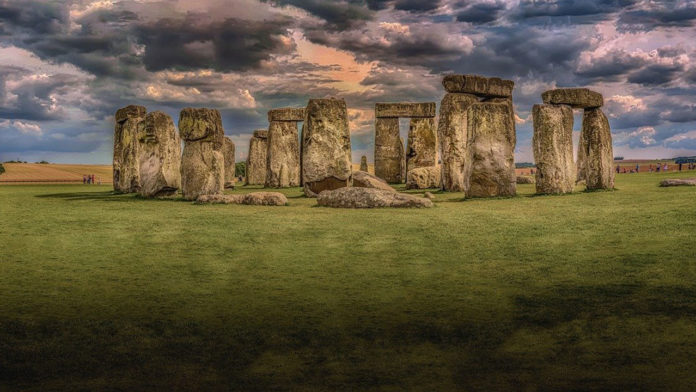Archaeologists recently discovered a significant prehistoric monument under the earth near Stonehenge. The discovery could highlight new light on the origins of the mystical stone circle in southwestern England.
According to a group of archeologists from British universities led by the University of Bradford, the site consists of at least 20 huge shafts, more than 10 meters (32 feet) in diameter and 5 meters (16 feet) deep, forming a circle more than 2 kilometers (1.2 miles) in diameter.
The new find is at Durrington Walls, the site of a Neolithic village about 2 kilometers (1.2 miles) from Stonehenge.
Scientists noted, “the shafts appear to have been dug around 4,500 years ago, and could mark the boundary of a sacred area or precinct around a circular monument known as the Durrington Walls henge.”
Richard Bates, of the University of St. Andrews School of Earth and Environmental Sciences, said, “the findings—made with remote sensing and sampling—provided “an insight to the past that shows an even more complex society than we could ever imagine.”
University of Bradford archaeologist Vince Gaffney said, “it was “remarkable” that Stonehenge, one of the most studied archaeological landscapes in the world, could yield such a significant discovery.”
“When these pits were first noted, it was thought they might be natural features—solution hollows in the chalk. But geophysical surveys allowed scientists to “join the dots and see there was a pattern on a massive scale.”
Scientists noted, “The size of the shafts and circuit surrounding Durrington Walls is without precedent within the UK. It demonstrates the significance of Durrington Walls Henge, the complexity of the monumental structures within the Stonehenge landscape, and the capacity and desire of Neolithic communities to record their cosmological belief systems in ways and at a scale, that we had never previously anticipated.”
Dr. Nick Snashall, National Trust archaeologist for the Stonehenge and Avebury World Heritage Site, said: “As the place where the builders of Stonehenge lived and feasted Durrington Walls is key to unlocking the story of the wider Stonehenge landscape, and this astonishing discovery offers us new insights into the lives and beliefs of our Neolithic ancestors.”
“The Hidden Landscapes team has combined cutting-edge, archaeological fieldwork with good old-fashioned detective work to reveal this extraordinary discovery and write a whole new chapter in the story of the Stonehenge landscape.”
Journal Reference:
- Gaffney, V. et al. 2020 A Massive, Late Neolithic Pit Structure associated with Durrington Walls Henge, Internet Archaeology 55. DOI: 10.11141/ia.55.4
